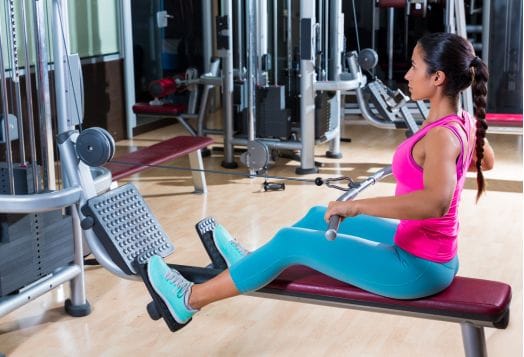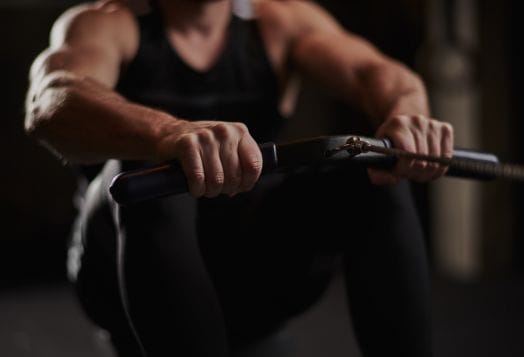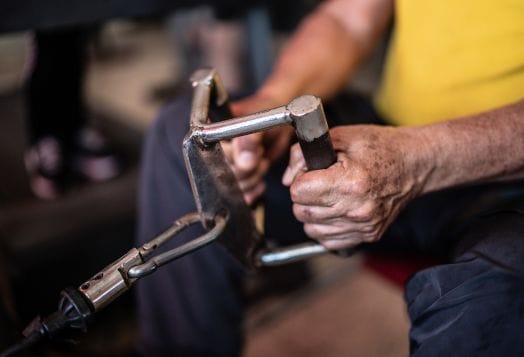If you're looking to build a stronger back and improve posture, the cable row exercise is a must-have in your training arsenal. When done right, it’s a powerful movement that engages key muscle groups while protecting your spine. But to unlock its full benefits, you need to master the seated row form, avoid common pitfalls, and understand how to make the most out of every rep.
What is a Seated Cable Row?
The seated cable row is a foundational pulling exercise that targets the back and upper body. It is performed using a gym cable machine equipped with a handle or bar attachment—typically a V-bar, a wide grip, or a rope.
This exercise focuses on a controlled pulling motion, drawing the attachment toward your torso while maintaining proper posture. It’s a resistance training staple, alongside other key exercises for developing the posterior chain.
In addition to building strength, seated cable rows improve grip strength, muscle balance, and postural control. They’re a go-to movement for lifters of all levels and are often used in hypertrophy training and rehabilitation settings.

Muscles Worked in Seated Cable Row
When asking what cable row muscles worked, the list is extensive, making it a compound powerhouse. Here’s a breakdown:
Primary Muscles:
Latissimus dorsi: These are your broadest back muscles, which are key for the pulling motion.
Rhomboids: Located between your shoulder blades, they help retract the scapula.
Trapezius: The middle and lower traps especially contribute to shoulder stability.
Secondary Muscles:
Biceps and forearms: Engage during the pull to assist arm flexion.
Rear deltoids: Work with the upper back to complete the motion.
Stabilisers:
Erector spinae: Supports your spine throughout the movement.
Core muscles: Aid in maintaining posture and resisting excessive sway.
This compound movement emphasises scapular retraction and posterior chain engagement, making it a staple in any back-focused routine.
How to Do the Seated Cable Row Correctly
Mastering your seated row form can be the difference between building muscle and developing poor habits. Follow these steps for proper execution:
Step 1: Set Up the Equipment
Use a seated cable machine and select your preferred cable attachments.
Adjust the weight stack machine to a manageable resistance level.

Step 2: Sit and Grip Properly
Sit upright with your feet firmly on the footplates and knees slightly bent.
Depending on your target muscles, grab the handle using a neutral or overhand grip.
Step 3: Engage and Pull
Maintain a neutral spine and lift your chest.
Begin the rowing movement by pulling the handle toward your abdomen, keeping your elbows close to your body.
At the top, squeeze your shoulder girdle to activate the latissimus dorsi and rhomboids.

Step 4: Controlled Return
Slowly return the handle to the start position with control, avoiding momentum.
Ensure you complete a full range of motion while keeping proper alignment.
Common Seated Cable Row Mistakes to Avoid
Even seasoned lifters can fall into bad habits. To steer clear of other pitfalls in the gym, check out our guide on common gym mistakes that could be slowing your progress. Avoid these form flaws for safer and more effective workouts:
Rounding the Back
Maintain a spine neutral alignment at all times to avoid spinal load and injury.

Using Momentum
Avoid jerking the weight. Focus on controlled repetition for proper concentric contraction and eccentric phase.
Flaring Elbows
Keep your elbows tucked in to engage your back more effectively and reduce shoulder stress.
Leaning Too Far Back
Don’t turn the movement into a lower back extension. Maintain a tall, strong torso.
Tips for Better Results with Cable Row Exercise
Want to upgrade your cable row exercise game? Try these advanced tips:
Pause at the peak of each rep to increase engagement and maximise hypertrophy.
Change your handle attachment (wide, close, rope) to target different angles and muscle fibres.
- Include dumbbell rows, inverted rows, or lat pulldowns with guidance from fitness trainers to build a more complete upper back workout.
Post-row stretches help reduce tightness and support recovery. Include chest and lat stretches after training.
The Perfect Seated Cable Row
Perfecting your seated cable row technique can drastically improve upper body strength, posture, and back muscle definition. From choosing the proper handle to avoiding form errors, this cable row exercise is all about precision. With every pull, you’re building the foundation for a balanced and injury-resistant body.
Disclaimer: This blog is intended for informational purposes only and should not be considered medical or professional fitness advice. Consult a healthcare provider or certified fitness professional before starting any new exercise program, especially if you have pre-existing health conditions or injuries.




